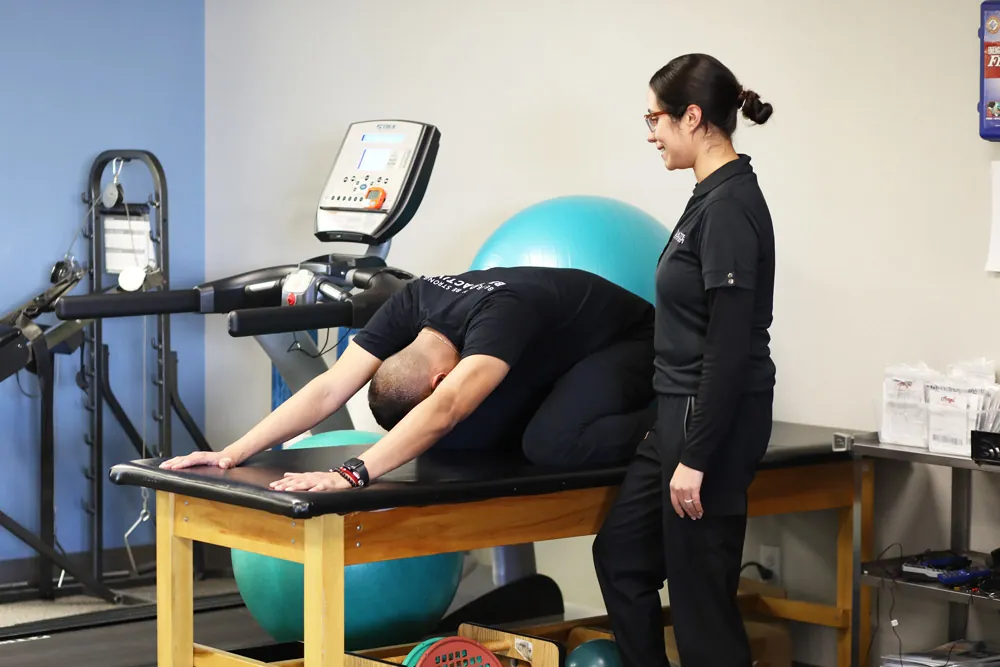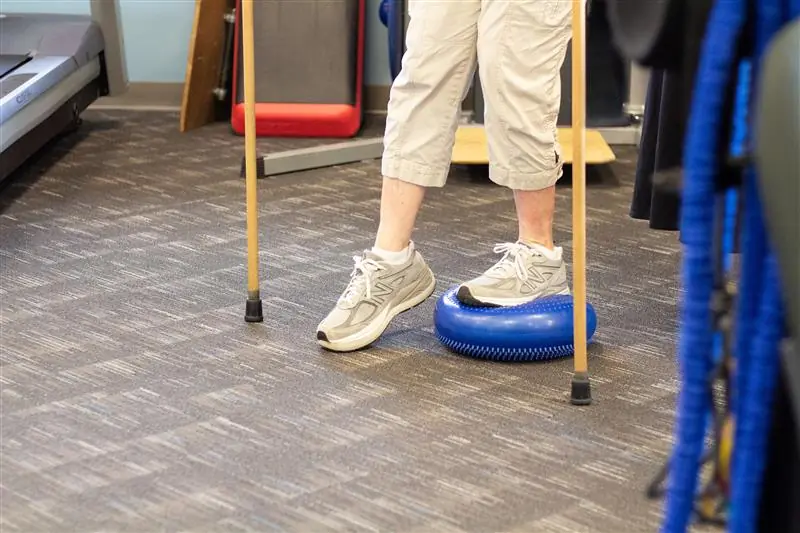Posture is a term that can be misunderstood as it can mean different things to different people. To some, it refers to how you stand or sit in one position, while others may use the term “posture” to describe the position of your body when you’re moving around. Either way, posture can impact your overall health and well-being. The good news is that there are ways to improve your posture, and physical therapists are experts at helping others move and feel better. Here’s everything you need to know about how to improve posture with physical therapy and what posture is.
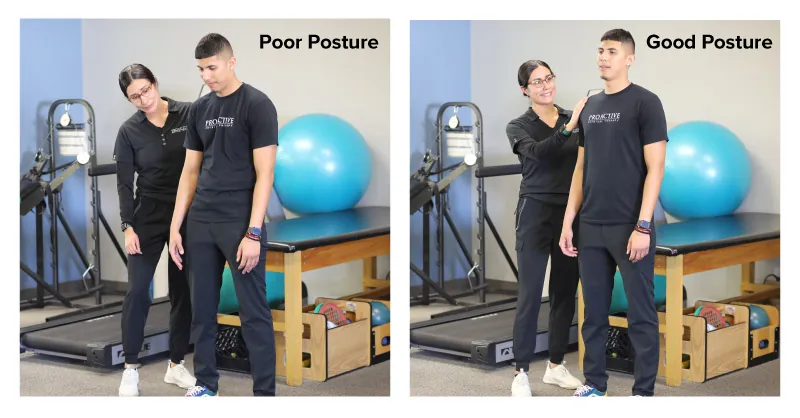
What is “Poor Posture”?
“Poor posture” is when the spine is not neutral. The spine is your body’s central support system and needs to be in the correct posture to function correctly. “Poor posture” can cause many issues, including pain, muscle strain, and injury. Many people do not even know they have bad posture until they get tested by a physical therapist or chiropractor. When your body does not have optimal alignment, it can put an abnormal load on postural muscles and joints of the spine. This sends signals to the brain perceived as pain or discomfort. Our posture becomes less-than-ideal, especially as we enter adulthood, because of many hours sitting at home or work using computers, which means less time being physically active. Not all who have poor posture experience pain. However, when individuals experience pain due to poor posture over time, this is known as postural dysfunction.
What is Postural Dysfunction?
Postural dysfunction is when the spine is not aligned correctly, and the body’s weight is uneven across muscles, joints, and the spinal column. It is common for people to have poor posture due to their lifestyle and daily habits.
Some causes of postural dysfunction include:
- Poor spine structure can be genetic or an alignment due to postural habits over time.
- Being overweight or obese: The more weight you carry, the harder it is for your muscles and joints to handle the stressors and forces required for that weight.
- Being underweight: If you are not eating enough, your body will not have the energy to sustain itself properly, which can cause problems.
- Sedentary lifestyle: Sitting at a desk, on the couch, or driving for long periods. Prolonged sitting results in a forward head and rounded shoulders. It can also lead to weakness of postural muscles, resulting in dysfunction.
- Poor muscle strength and endurance: if your muscles are weak or fatigued quickly, this can strain your joints and ligaments.
- Injuries to joints and ligaments (particularly in the neck and lower back): if you have suffered an injury that has not healed correctly, this can lead to ongoing problems.
- Poor diet or nutrition. Eating a healthy, balanced diet is essential for good health and well-being.
Symptoms of “Poor Posture”
While “poor posture” may not seem a big deal, it can lead to serious health issues, such as chronic back pain and headaches. Symptoms of poor posture include:
- Pain in the neck, upper back, shoulders, back, and hips
- Headaches
- Poor breathing
- Inability to stand up straight
- Poor balance and coordination
- Difficulty sleeping
- Difficulty sitting in one position for too long.
Why is Posture Important?
Posture is essential for various reasons, primarily because “good posture” helps you be more comfortable daily. The strain on your muscles and joints when you’re slumped over in your chair at work or hunched over at home for an extended period can make them ache. Good posture helps to alleviate this problem by keeping the muscles and joints in the proper position so they don’t have to work as hard. In addition to making you less tired during the day, good posture can also help prevent injury while exercising or participating in sports activities, like running and cycling. Injured athletes can maintain an upright position rather than bending forward at the waist by using proper form when performing exercises that engage core muscles, like the abs, back, and buttocks. Moving around is easier when your body is aligned correctly and will cause less undue stress on joints and muscles.
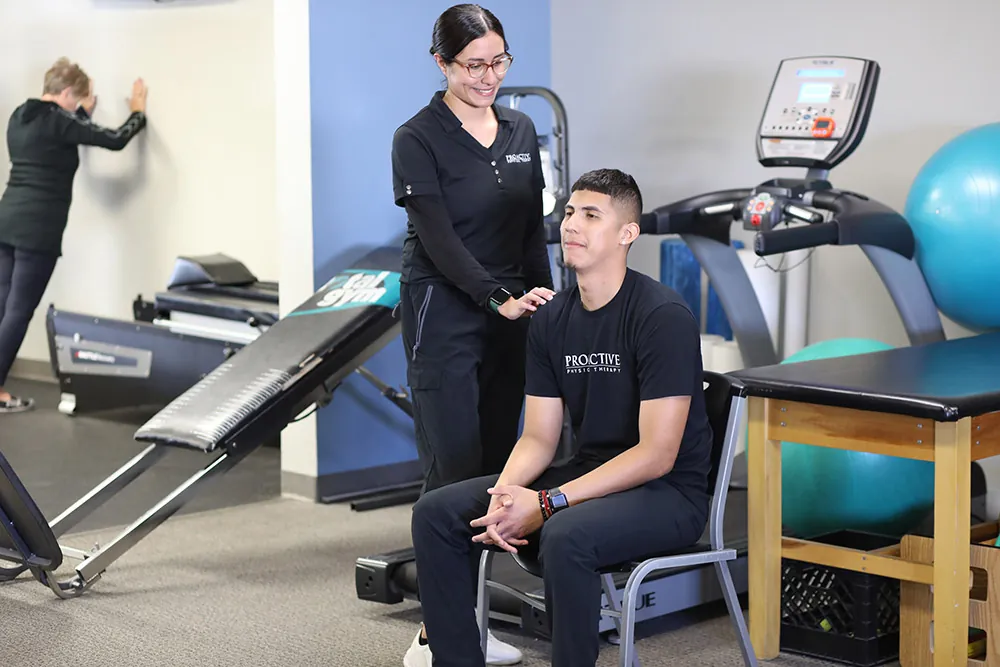
How to Improve Posture with Physical Therapy
Maintaining “good posture” starts by being mindful of your daily postural habits. It is okay to slouch at times to rest your muscles. Physical therapists can help improve your posture by providing individualized exercises to strengthen and stretch your back, neck, and shoulder muscles. They’ll also show you how to perform these exercises correctly so you don’t strain yourself. Your physical therapist will likely recommend specific stretches and strengthening exercises targeting your problem areas.
For example, your physical therapist may recommend shoulder shrugs if you have rounded shoulders. If you have a forward head posture, they may recommend stretching your neck by holding your chin in place while looking up at the ceiling. A physical therapist will also advise on how to avoid aggravating problems with “poor posture.”
4 Stretches to Improve Posture
There are several simple stretches that you can do to improve your posture. A foam roller is a great way to stretch your back. You can release tension in your back muscles by lying on the ground and rolling over a foam roller. You can also use a tennis or lacrosse ball to massage those same muscles if they’re particularly stiff or tender.
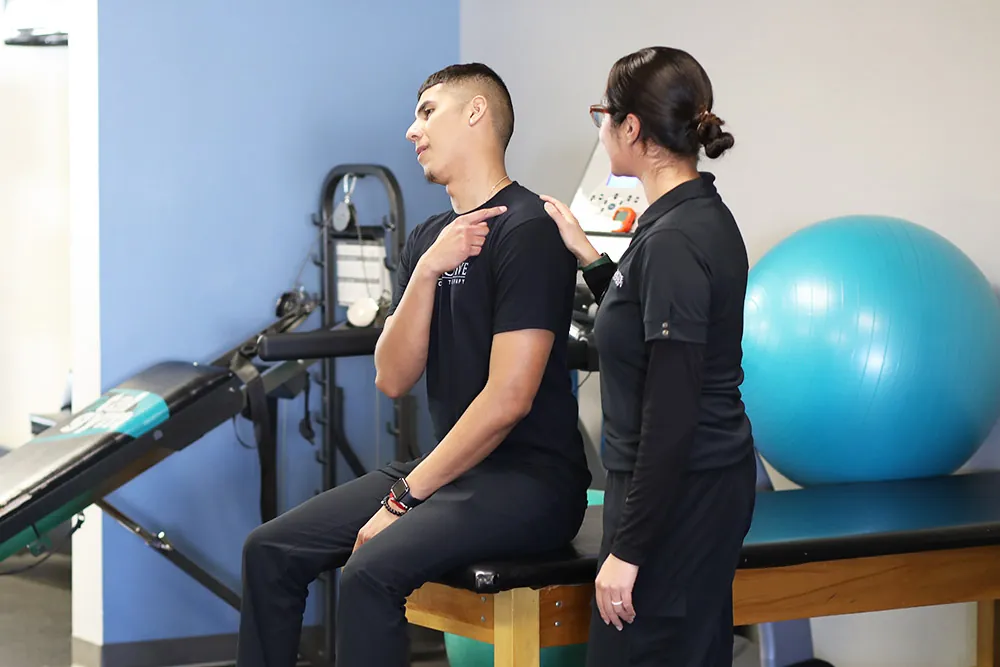
1. Neck Stretch
- Start in a seated position, sitting nice and tall for good posture.
- Bring your hand to the side you wish to stretch behind your back.
- Place your other hand on top of your head and gently pull your head to the side, away from the hand behind your back. You should feel the stretch through your neck through the upper trap region.
- Hold this for 30 seconds on both sides.
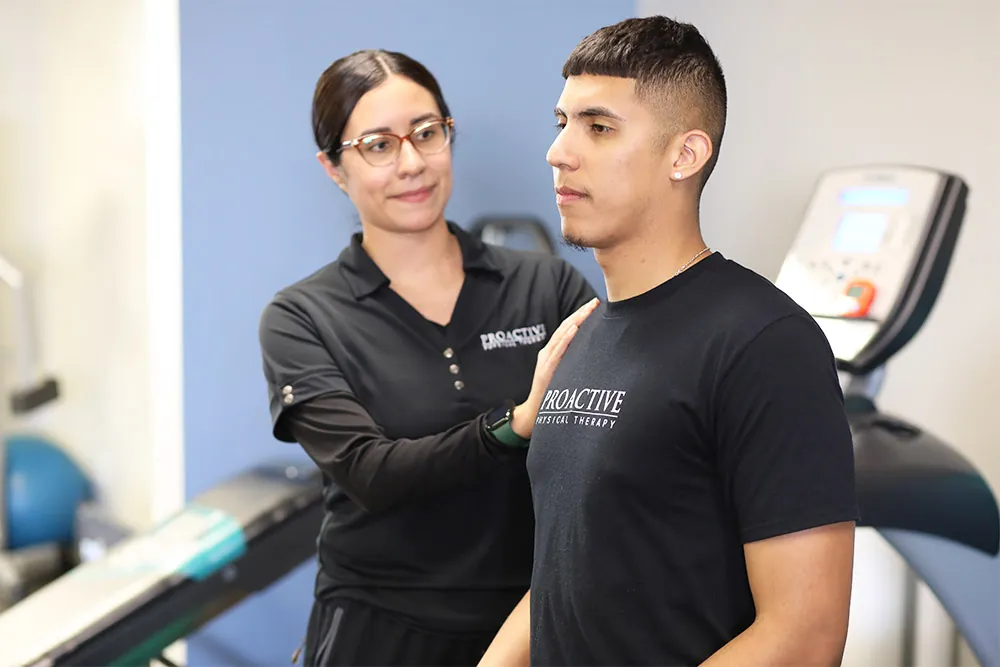
2. Shoulder Blade Squeeze
- Sit or stand
- Pull your shoulder blades together
- Hold for five seconds, and then relax.
- Repeat five times.

3. Cat-Cow Stretch
- Start on your hands and knees, aligning your wrists underneath your shoulders and your knees underneath your hips.
- Think of the spine as a straight line connecting the shoulders to the hips. Try visualizing the line extending forward through the crown of the head and back through the tailbone. This is the position of a neutral spine.
- Keep the neck long by looking down and out.
- Repeat several times
Reference >> How to Cat-Cow Stretch
4. Child’s Pose
If you are unable to kneel into the child’s pose position, you can perform this stretch standing at a counter:
- Lean forward and place both hands on the counter.
- Walk your hands to the left.
- You should feel a stretch in the low-back musculature on your right side.
- Hold this for 15-30 seconds and then go to the right side, where a stretch should be felt in the left low back region.
- Do this 3 times on both sides.
When to Consult a Physical Therapist
Postural dysfunction may be a cause of back pain and headaches. It is essential to address the issue as soon as possible so that you can prevent it from becoming a more serious problem. The most important thing is to be mindful of your posture and take steps to correct it. Working with a physical therapist can help you get back on track before more severe problems occur. The more you learn about the effects of poor posture, the better equipped you will be to prevent it. If you are experiencing any pain or discomfort, request a FREE assessment today, and we will help you resolve your pain and improve your posture.


